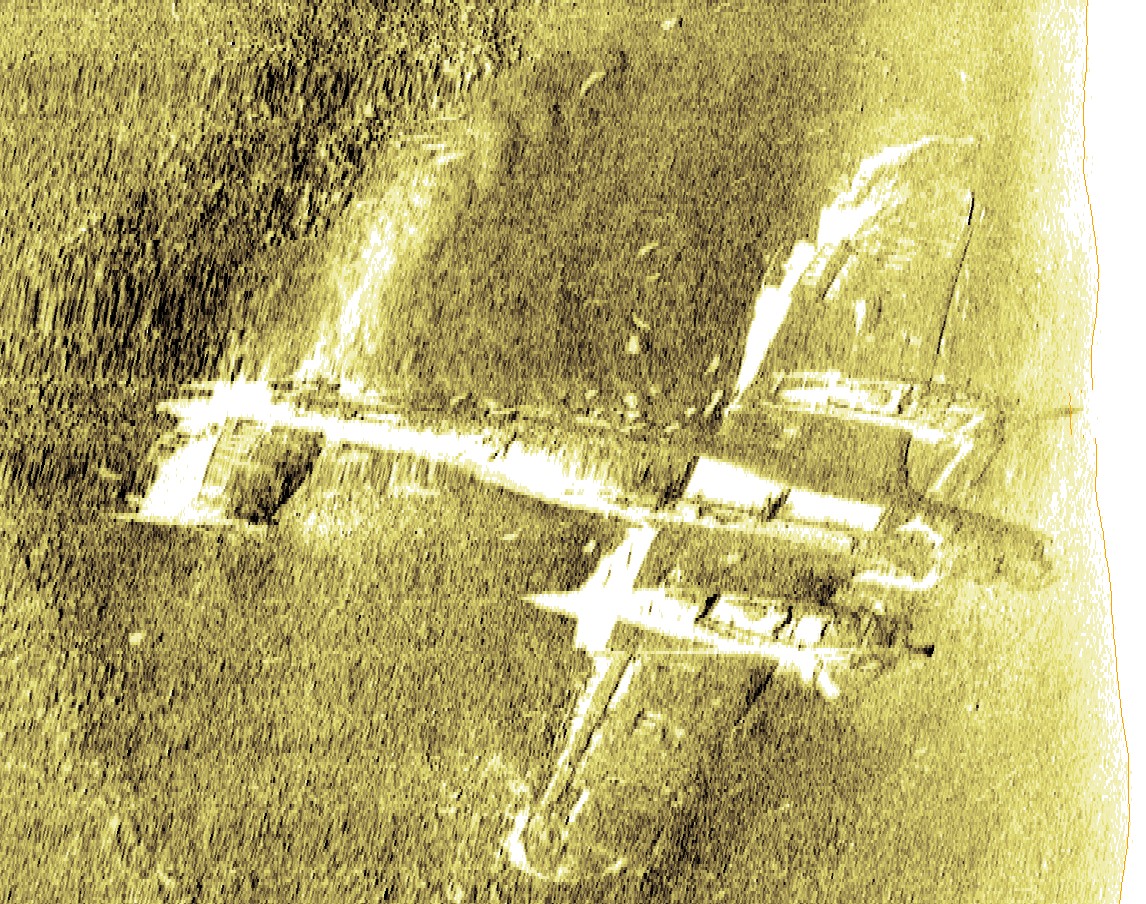Seventy-four years ago today, at the height of the Battle of Britain, a Royal Air Force fighter plane shot down a German Dornier 17 bomber off the coast of Kent.
The Dornier ditched in the sea on the Goodwin Sands. These dangerous sandbanks have earned the nickname ‘Ship Swallowers’ due to the number of ships that have been lost on them and because of the remarkable state of preservation of some of the historic ships that are revealed when the sandbanks move. The pilot and his observer survived to be captured, but the Dornier sank and was ‘swallowed’ by the Goodwins. It was then forgotten.

In the early years of this century a fisherman snagged his nets on an obstruction at the same location. He reported it to local archaeologist Bob Peacock, who dived the site, and found the remains of a mystery aircraft. He then told Wessex Archaeology. We thought it might be important, so we in turn reported it to English Heritage. We were due to carry out a geophysical survey for them in the area and we therefore got the chance to look at the wreck using sidescan sonar. This produced this remarkable image of an almost intact aircraft that looked as though it might be a Dornier.
Eventually this sonar image excited the interest of the RAF Museum and with their assistance we were able to return with our diving team and confirm that the wreck was a Dornier 17. Subsequently the museum embarked on a risky and very brave attempt to recover the wreck for public display, an attempt that was successful in June 2013 when the aircraft finally resurfaced under the glare of the world’s media. It is currently at the RAF Museum in Cosford where the ongoing work of their specialist conservation team to preserve the aircraft, assisted by scientists from Imperial College London, can be seen by visitors. You can read more about their conservation project here.
A major focus of the RAF Museum’s plans for the future revolves around its very popular and important Battle of Britain collection of historic aircraft. What excited the RAF Museum and its sponsors about the aircraft that crashed off Kent is that the Dornier 17, nicknamed the ‘Flying Pencil’ because of its thin and fast shape, is the only major Battle of Britain aircraft not already in that collection; indeed no example of this bomber had been preserved in any museum collection. As an almost intact wreck, the Dornier was therefore unique and nothing less than a world-class aviation archaeology discovery.
Wessex Archaeology’s role in the discovery and identification of the Dornier reflects the growing interest in aviation archaeology at sea and helps build upon the major strategic study that we undertook for English Heritage in 2008, Aircraft Crash Sites at Sea. That study demonstrated that despite the time that has elapsed and the numerous threats to their survival, there was evidence that hundreds of aircraft wrecks of the Second World War could lie in the sea off the UK coast. Furthermore, it showed that the potential of those wrecks to inform our understanding of that war and of the development of aviation in the 20th century was very great.
Since then our work on aircraft crash sites has continued and we have recently helped the new DP World London Gateway Port to investigate and recover the wreckage of a rare secret prototype Ju 88 bomber, shot down by Norwegian fighter ace Marius Eriksen in the Thames Estuary in 1943.
Today, however, we remember Helmut Reinhardt and Heinz Huhn, the crew members who did not survive the loss of their Dornier 17 in 1940 off Kent – two of the Second World War’s many victims.
By Gemma Ingason and Graham Scott